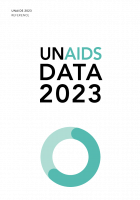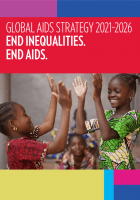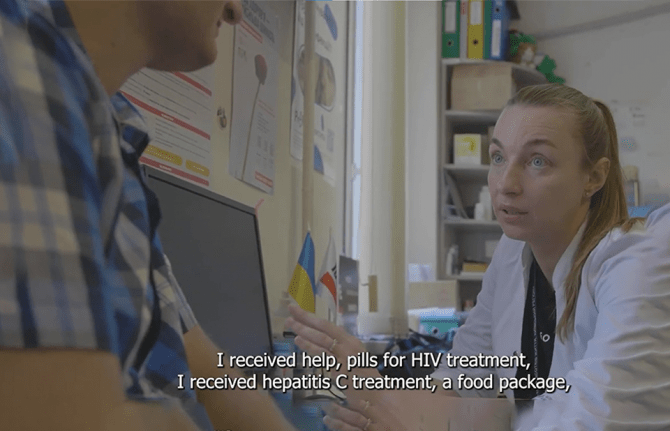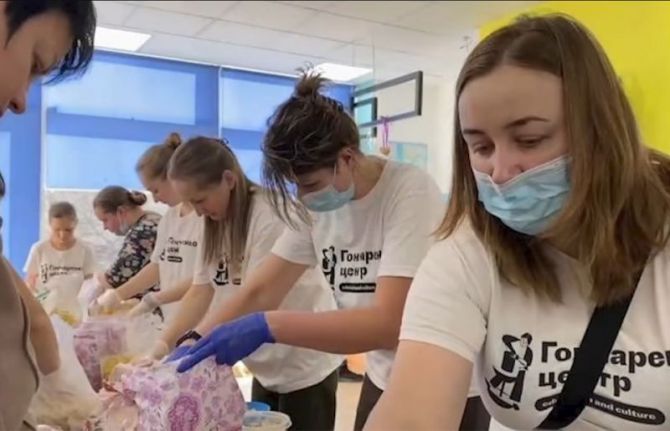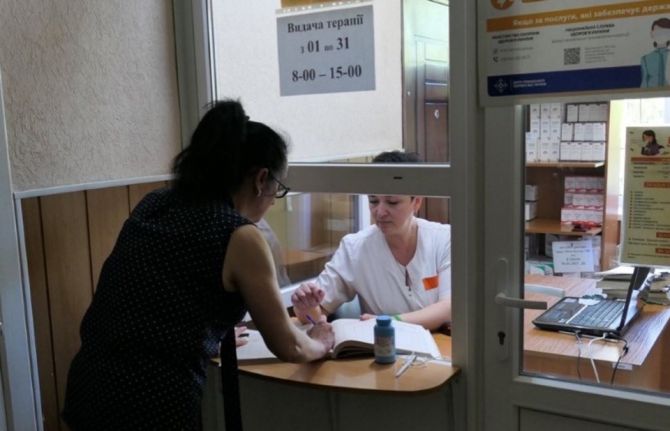Two Years On: UNAIDS supports Ukraine’s commitment to the HIV response
Two years of war in Ukraine have resulted in significant humanitarian consequences. Forty percent of the current population of Ukraine,14.6 million people, are in need of humanitarian assistance, 6.4 million refugees have fled the country, and more than 3 million people are internally displaced. People living with and affected by HIV continue to be vulnerable to the effects of the war, even as HIV services have been restored and are functional in most parts of the country.
Russian strikes have continued to wreak havoc on Ukrainian cities, causing death and destruction, impacting access to water, electricity, heating, and health services for millions of civilians.
In addition, there have been 1,570 attacks on health facilities and 630 health facilities damaged.
According to the latest data from The Ukrainian Public Health Center, prior to the war, Ukraine had made significant progress in reducing HIV incidence (-47%) and AIDS-related mortality (-81%) since 2010. Despite the initial disruption to the national AIDS response at the onset of the war, the national AIDS program has gradually resumed routine operations.
As of the end of 2023, the number of patients on antiretroviral therapy (ART) was only slightly below the pre-war figure, standing at 118,348 (130,724 as of February 2022). Additionally, approximately seven thousand patients are known to receive ART abroad. In the last two years, the number of patients on opioid agonist therapy (OAT) increased by 38%, reaching 27,511 people. Pre-exposure prophylaxis (PrEP) more than doubled, reaching 12,354 people.
However, in eastern and southern occupied territories data is incomplete or not available. This is true of Donetsk, Luhansk, Zaporizhzhia, Kherson regions, AR Crimea, and the city of Sevastopol. The same occurred in 2023. Despite these challenges, the surveillance system in the government-controlled areas remains operational, ensuring the completeness and quality of data on HIV prevention, testing and treatment services.
In addition, 9.6 million people in Ukraine are estimated to be at risk of or living with a mental health condition, and 3.9 million people are estimated to suffer from moderate to severe symptoms. And there has been an increase in gender-based violence.
Ukraine remains committed to the HIV response through a strong coalition of government, civil society, international organizations, and donors, first and foremost The United States President's Emergency Plan for AIDS Relief (PEPFAR) and The Global Fund to Fight AIDS, Tuberculosis, and Malaria. This collaboration has secured vital supplies of antiretroviral therapy (ARV), tuberculosis medicines, and opioid agonist therapy (OAT), ensuring uninterrupted HIV treatment and services.
UNAIDS Secretariat, Co-sponsors and UN agencies have joined forces to provide a unified response, ensuring that vulnerable populations, including those on the frontline and in the most severely affected areas, receive comprehensive support. This collaborative effort aims to bridge gaps and address the unique challenges faced by women, people living with HIV and key populations, including the delivery of crucial humanitarian aid and HIV services.
The past two years have been very challenging. Even though the country has managed to maintain HIV services, the unpredictability of what lies ahead has many fearing the worst. Support is needed to ensure sustainability of the AIDS response and to protect key populations affected by the enduring hardships of war.
For more information and more in-depth analysis, read the Situation Report (February 2024)

